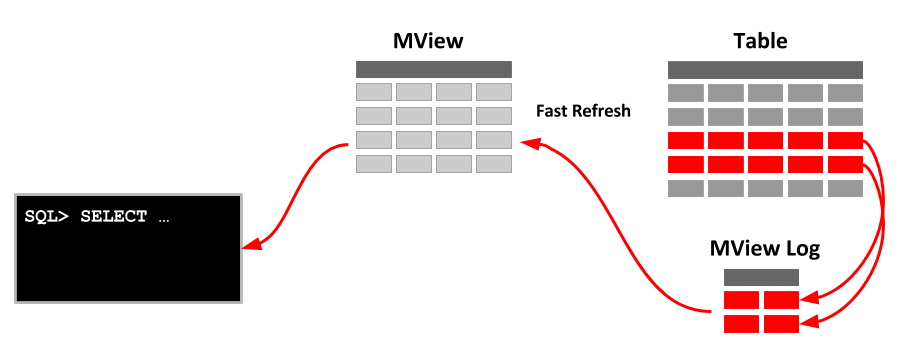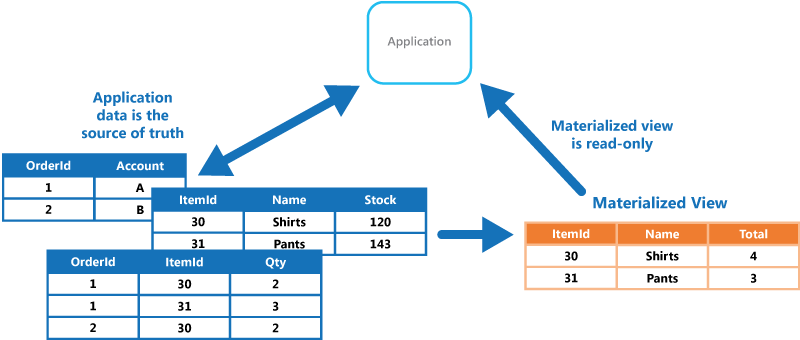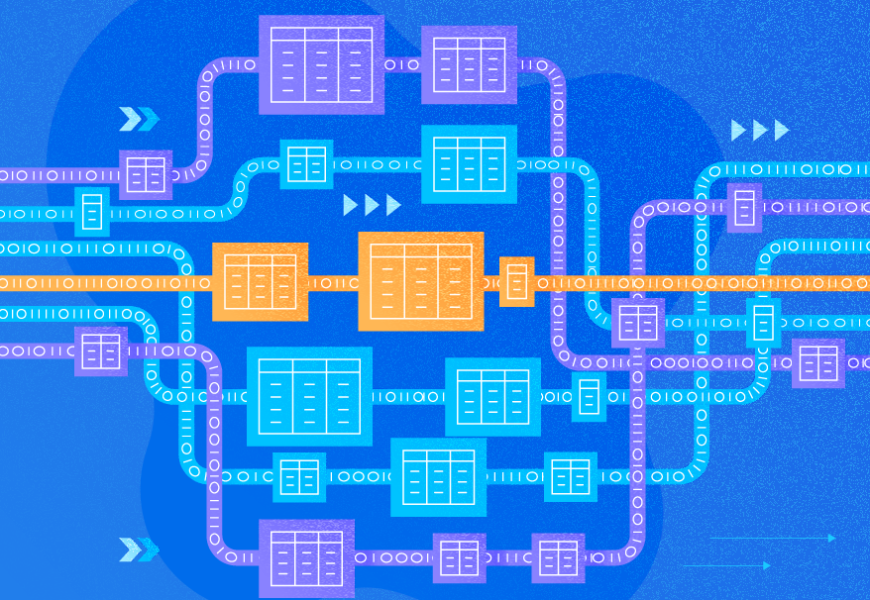As data volumes continue to increase, more developers look towards materialized views to process queries. This approach has a lot of potentials.
We are discovering that apps and software are the next steps in creating a more connected future. Data solutions such as cloud computing, wireless communication, and the internet of things (IoT) are all crucial for the advancement of technologies.
Cloud computing and pre-computational processes, such as materialized views, used together bring the companies more control of their data solutions. Using a materialized view to execute queries instead of traditional ways of viewing data tables is a significant step towards a deeper understanding of storing and extracting data.
This article will focus on the idea of a materialized view, its conditions, and the benefits it brings to users. You’ll also learn the difference between a view and a materialized view, and why you should take advantage of a materialized view if you haven’t already.
What is a Materialized View?
A materialized view simplifies complex data by saving query information – you don’t have to create a new query every time you need to access the information.
The main thing that sets a materialized view apart is that it is a copy of query data that does not run in real-time. It takes a little more space, but it also retrieves data very quickly. You can set materialized views to get refreshed on a schedule so that the updated information won’t fall through the cracks.

When used in conjunction with other development tools, a materialized view can create a more secure environment for your database.
According to Barbara Ericson of Cloud Defense, “a development team could introduce a SAST tool in their development workflow and only utilize the security checks for catching specific errors, like SQL injection issues. As the developers learn about the tool and see how it catches SQL injection errors, they’ll adapt more quickly and see the value that can provide to the development pipeline. This is more effective in a practical sense as well as a better strategy for encouraging developers to adopt DevSecOps practices wholesale.”
Oracle was the first database to make materialized views available. Since 8i, it has been a part of every release. Not all environments support materialized views, as it is a fairly modern database tool. However, SQL Server, Sybase SQL Anywhere, and now PostgreSQL and BigQuery all support them.
The importance of using materialized views is more than just increasing productivity. Moore’s law suggests that computers and computing power will become smaller and less expensive as time goes on. There is an impending limitation that we are quickly approaching, though. Technological advances in computing and data storage are going beyond physical capabilities.
Materialized View vs View
Both a view and a materialized view can be very useful for simplifying and optimizing data. You can join data from multiple tables and compile the information into one simple table.
To better understand what benefits a materialized view brings, let’s compare it to a regular view.

A view is a precise virtual table that collects data you have previously gathered from any other relevant query. Anytime you access the view, it recompiles the data to provide you with the most up-to-date information according to your query.
You can make changes in the view or the base tables, and the data will be updated automatically in both places. Thus, if you make a change in a view, it will push that data to the base table. A change to the base table is automatically pushed to the view. Because of these steps, it may take some time for the regular view to get updated.
A regular view is great because it doesn’t take much space. But it sacrifices speed and performance.
A materialized view is much more efficient at executing queries. The data is physically saved at a specific point in time. You don’t need to re-read all the data associated with a query every single time.
The drawback is that you have to make sure to view the most recent data. To reduce the risk of viewing obsolete data, you can refresh it manually, or set it to refresh on schedule or by triggers.
Should you Use a Materialized View?
When you consider what a materialized view does, you may wonder why few seconds are worth extra space to save a copy of the data.
First of all, it is about cost-efficiency. Every time you query a database, there are costs involved. Applications evolve to become more resource-intensive. Thus, each step of query execution (parsing, validating, planning, optimizing) equates to CPU time, memory usage, and cost accrual.
Materialized views are essential in cutting costs for developers. The results obtained in a materialized view are kept in memory. They are only updated when needed, not constantly. So, you improve the performance by precomputing some of the most expensive operations. Additionally, the speed can increase greatly when it comes to querying large databases.
Unfortunately, the use of materialized views may not suit every situation. First, not every database supports materialized views (Jump to What is a materialized view for information on environments that do support them).
There are other issues too. Material views are read-only. This means that you can’t update tables from a material view like you can with a regular view. Also, even though material views are pretty secure, there are still security risks since some security features are missing. For example, you can’t create security keys or constraints with a material view.
Materialized View: Tips for Using
You should keep in mind some features to ensure getting the most from a materialized view:

Make sure that you are working with the materialized view that reflects query patterns against the base table. You don’t want to create a materialized view for every single iteration of a query. That would defeat the purpose. Create a materialized view that will focus on a broad set of queries.
If your original table is partitioned, you should partition the materialized view as well. If you don’t, it may become larger than you want. Partitioning the materialized view when to match the partitioned base table ensures that you preserve the performance.
Be mindful of open-source platforms. You need to consider how they affect your vulnerability as you create materialized views. Using own code is free from vulnerabilities that affect APIs. It can improve your performance, and it is harder to hack.
Conclusion
Using materialized views instead of extracting data from tables on their own or using a regular view can help optimize performance and increase data productivity. Check if your database supports materialized views, and make the most of the database connectivity.
Many modern tools for coding and developing help the specialists. In addition to taking advantage of these tools, use materialized views to decrease your data costs and increase the speed of queries. Even though the cost of computers has decreased over time, the cost of data remains much higher. Finding ways to decrease data and storage costs, such as using materialized views, is going to be key, as we advance even further into the digital age.
Last modified: September 23, 2021






I have been exploring for a little bit for any high quality articles or blog posts on this kind of area . Exploring in Yahoo I at last stumbled upon this website. Reading this information So i抦 happy to convey that I’ve a very good uncanny feeling I discovered exactly what I needed. I most certainly will make certain to don抰 forget this site and give it a look regularly.